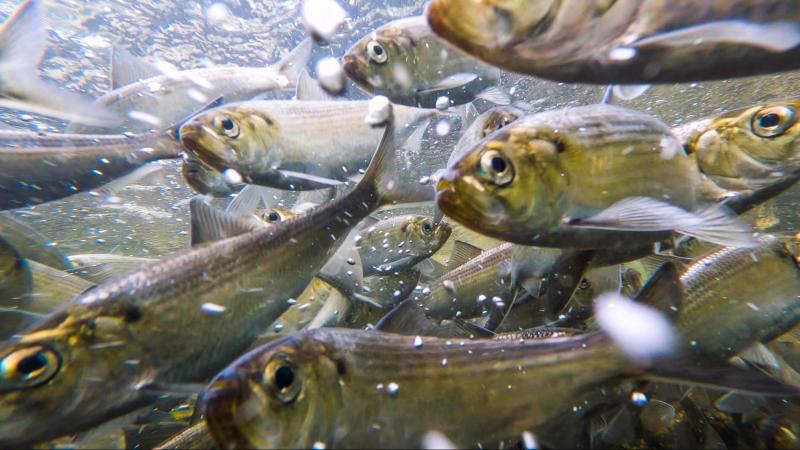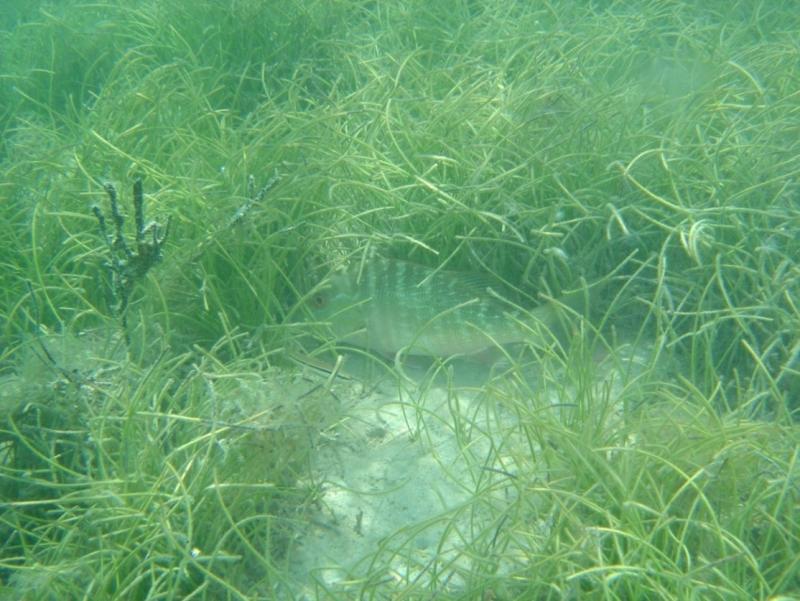River Herring: Complex Life Cycles With Numerous Threats
River herring (alewife and blueback herring) reproduce and spend their first several months in lakes, rivers, and estuaries before migrating to the ocean where they grow and mature into adults. They support both marine and freshwater food webs from the Atlantic coast of Canada to the St. Johns River in Florida. However, their populations declined substantially in the latter half of the 20th century to current historic lows. While certain rivers, largely in northern New England, still support limited fisheries, they are only a small fraction of what was once a tremendously productive coastal fishery. A new habitat conservation plan will help address the threats they face and recommend techniques to restore their habitat and increase their populations.
River herring historically represented an economically and culturally significant source of predictable and abundant protein upon their return to coastal rivers each spring. Population declines have been driven by stressors including decreased connectivity between ocean and freshwater habitats, degraded freshwater and estuary habitats, and climate change. Barriers to fish passage created by dams, culverts, and other human infrastructure are among the most persistent and detrimental impacts. There are more than 35,000 dams and 200,000 road stream crossings on the East Coast, many of which are barriers to fish migrations.
A Path Forward: the River Herring Habitat Conservation Plan
In 2021, NOAA Fisheries, along with our partners, began working on a coastwide River Herring Habitat Conservation Plan to support restoration efforts and promote a better understanding of the species and issues they face. The plan takes a broad approach—exploring the history, current status, and future of river herring throughout their estuarine and freshwater life stages. It ends with a series of recommendations designed to address factors contributing to habitat loss and population decline.
Life History
This section includes a review of the biology, distribution, and related ecological considerations for both species of river herring.
Stock Status and Fisheries
This section documents the current status of river herring stock and contemporary directed fisheries. It includes a timeline of federal management actions and an overview of river herring management administered by the Atlantic States Marine Fisheries Commission.
Threats
River herring are subject to many threats due to their large geographic distribution and the variety of their habitats. Threats include: lost connectivity or poor access to spawning and nursery habitats, climate change, poor water quality, at-sea mortality (including bycatch in other fisheries), and predation. These threats have varying degrees of impact based on locality and life stage.
Data Gaps
Due to their complex life cycle, there are still many gaps in our collective understanding of river herring. They include:
- Climate change effects
- Ocean and river fisheries (both current and historical harvest)
- Habitat condition
- Trophic-level and species interactions
- Population dynamics
- Life history strategies
Social-Ecological Considerations
The annual return of river herring to coastal waterways has significant social and economic influence on coastal communities, and has throughout human history. The commercial components have been greatly diminished. This section discusses the current and historical social and ecological benefits associated with robust river herring populations.
Watershed Overview
Effective habitat conservation, enhancement, and restoration actions are framed by historical and current conditions that may be specific to each watershed. Each watershed (or sub-watershed) can present a distinct combination of threats or obstacles to river herring. Unique challenges for restoration that should be considered during planning efforts. This section provides an overview of watersheds that support spawning and rearing habitats for river herring.
Goals and Recommendations
The ultimate goal is to restore healthy, sustainable Atlantic coast river herring populations that support a broad array of social and ecological services and functions, with stocks that are no longer designated as depleted. The plan outlines four high-level goals as a framework for more specific recommendations to restore, maintain, and enhance river herring habitats and the populations they support:
- Goal 1: Improve connectivity of river herring habitats throughout the species ranges
- Goal 2: Assess and enhance spawning and rearing habitats for river herring throughout their coastwide ranges
- Goal 3: Establish and strengthen partnerships among state and federal agencies, non-governmental organizations, Tribes, and other river herring stakeholders
- Goal 4: Address information gaps and research needs where applied research is needed to expand knowledge of river herring related topics
Together, they create a framework to inform and support efforts for restoring alewife and blueback herring populations throughout their native ranges with a focus on their spawning and rearing habitats. Due to their current diminished state, immediate and strategic action is necessary to restore populations in the face of multiple overlapping threats and challenges. The plan marks another step in this much needed effort to conserve these important fishes.
Highlighting Restoration Efforts
In addition to the framework described above, the plan includes a Restoration Project Showcase. It details 11 restoration projects recently completed along the Atlantic coast that restore river herring habitat and re-establish connectivity. They highlight the diversity of approaches, site conditions, and issues addressed in different regions. These successful project examples include techniques used, funding sources, and “lessons learned” that can inform future restoration efforts.
A Vision for Recovery
The plan will inform our river herring habitat conservation and restoration activities, in collaboration with our partners and stakeholders, over the next decade and beyond. By following the efforts laid out in the plan, we seek to restore river herring throughout their native ranges to healthy, viable populations that support a broad array of social and ecological functions. This would include restoration of productive spawning and rearing habitats such that they are not a significant factor limiting recovery. There is much work to be done in order to restore river herring populations. With dedicated partners, and this River Herring Habitat Conservation Plan, we are poised to address the challenges facing these important natural resources along the Atlantic coast.
Read the plan and learn more about ongoing habitat restoration efforts.








